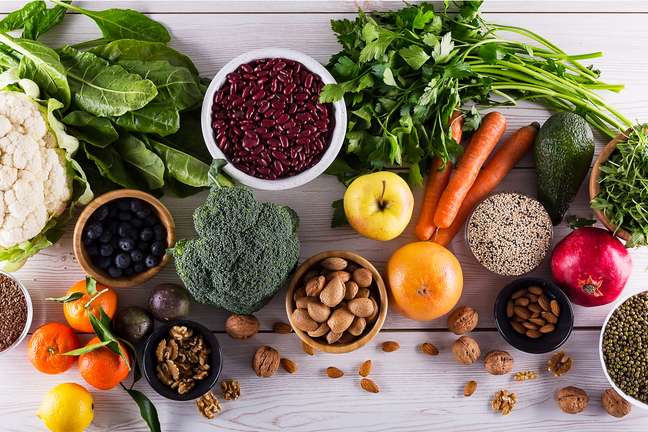Protein is essential for the functioning of the body and is easily found in vegetables.
Proteins are essential for the proper functioning of the body. They contribute to the construction of skin, muscles, bones and other tissues. According to Alessandra Luglio, nutritionist and coordinator of the nutrition department of the Brazilian Vegetarian Society, they perform essential physiological and metabolic functions, such as structural, transport, regulatory and enzymatic.

“They are responsible for the formation and maintenance of cellular tissues, muscle synthesis, antibodies, enzymes, hormones, neurotransmitters, the transport of substances through the body and are a source of energy,” he adds.
What foods can you find protein in?
Proteins can be found all over the kingdom vegetables. They are present in practically all foods except oils and sugars. They are found in fruits and vegetables, but the concentration is higher in legumes such as soy, edamame, lupine, peas, lentils, beans and chickpeas.
“They can be used in salads, stews, burgers, broths, dumplings, pancakes, ‘grãomelete’ (which uses chickpea flour) and also in sweet preparations, such as black bean brownies or tofu-based chocolate. peanuts and cashewsand vegetables, such as broccoli, cauliflower and mushrooms, are sources of protein, however they have a lower protein content than grains, ”details Priscilla Mazza, a specialist in sports nutrition and a graduate in metabolic evaluation.
Differences between plant and animal proteins
Each protein we consume is composed of a set of amino acids, they can be:
- Essentials: essentially from food.
- Not essential: obtained through food, but can also be produced by the body from essential amino acids.
“When we ingest a protein, we are actually ingesting a combination of amino acids. This protein is not absorbed in its entirety, it is first broken down into amino acids and then the amino acids are absorbed by the body. Plants and, when animals consume vegetables, they store these amino acids. “, explains nutritionist Alessandra Luglio.
When we consume food animal origin, we consume amino acids that have been synthesized by plants. “All plant foods have proteins, which provide us with all essential and non-essential amino acids, essential for the balance of our body and health,” adds the nutritionist. Therefore, there is no difference for the body whether animal or vegetable protein is consumed, both will be well absorbed.

Transition to vegetarianism in a healthy way
It’s possible replace animal proteins with vegetable ones without great difficulty, but it is necessary to pay attention to some points, as the nutritionist Priscilla Mazza advises: “The biggest mistake that occurs in this phase is the substitution of food. Many exclude meat, chicken, fish, eggs, milk and derivatives, which are protein sources, and replace them with options sources of carbohydrates, such as rice with vegetables, pasta with vegetables, rice with potatoes and vegetables, end up following a diet with a protein deficiency that can compromise their health “.
Include foods that are sources of vitamin C in your meals.
Priscilla Mazza recommends entering a food source of C vitamin with meals to promote iron absorption and increase consumption of dark green leafy vegetables such as kale, vegetables such as broccoli and calcium-fortified foods.
Nutritionist Alessandra Luglio reminds us that it is important vary the foods and include several groups of food of plant origin. “It’s the great key to the success of this diet. Including fruits, vegetables, legumes, whole grains, legumes and seeds on a daily basis is the way to go,” he recommends.
+The best content in your email for free. Choose your favorite Earth Newsletter. Click here!
Source: Terra
Benjamin Smith is a fashion journalist and author at Gossipify, known for his coverage of the latest fashion trends and industry insights. He writes about clothing, shoes, accessories, and runway shows, providing in-depth analysis and unique perspectives. He’s respected for his ability to spot emerging designers and trends, and for providing practical fashion advice to readers.





-1huxor8vo00v8.png)

